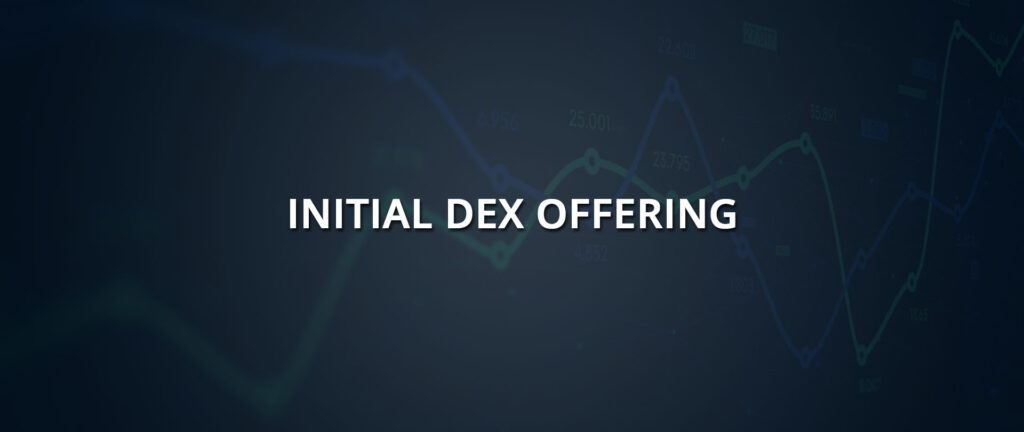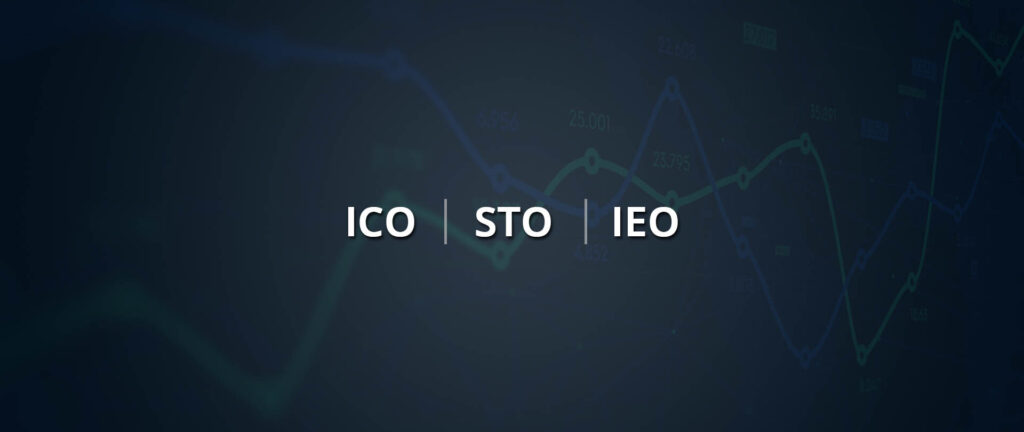
Initial DEX offering or IDO is a new fundraising model that offers better liquidity of crypto assets, faster, open and fair trading. IDO model is the successor of fundraising models such as ICO, STO, and IEO.
Before we learn about IDO crypto, let’s brush up on our knowledge of the fundraising concept via token sales. If a company wants to raise funds to build new products or expand its business, it has multiple options. The traditional option is to go for financial loans or investments from banks and VCs.
However, since the success of cryptocurrencies – Bitcoin and Ethereum, more companies had used it as an instrument for raising funds via token sales. Here companies create crypto tokens and issue them to the general public in exchange for Bitcoin, Ethereum, other major cryptocurrencies, and fiat currencies. This process is called fundraising via token issuance.
There are different methods to do token sales, namely, Initial Coin Offering or ICO, Security Token Offering or STO, Initial Exchange Offering or IEO, and the latest method is Initial Dex Offering or IDO. In this article, we’ll talk about IDO.
If you’d like to read more on ICO, STO, and IEO, you can refer to this article – How to launch an ICO, STO, or IEO
Here, we’ll help you gain better insights into the below topics:
- What is an Initial Dex Offering (IDO)?
- How is an IDO different from IEO/ICO/STO?
- What are the benefits of the IDO model?
- How to launch an IDO?
- What are the problems with the IDO model?
- What’s the future of the IDO model?
What is an Initial Dex Offering (IDO)?
- An IDO is a fundraising method in which the IDO coin is issued via decentralized liquidity exchange.
- A decentralized liquidity exchange is a type of crypto asset exchange that relies on liquidity pools with which traders can swap tokens.
- Liquidity pools are pairs of crypto assets and stable coins. For example, USDT/ETH is a liquidity pair. Traders can swap them between different crypto assets and stable coins based on market conditions. As the volatility of stablecoins is negligible, it offers a safe option for traders to manage the high volatility of crypto tokens and assets by swapping them with each other.
- As a result, decentralized liquidity exchanges enable companies to launch a token and access immediate liquidity.
In an IDO, the IDO coin is issued via decentralized liquidity exchanges, such as Uniswap, Bancor, or Binance. Binance DEX hosted the first-ever IDO. According to them, a fundraising method enables protocols available for traders without being controlled by others. An IDO can be self-organized by anyone. So, it does not bear any assurance or guarantee as the issuer controls the event. IDO is gaining popularity as more businesses are considering it for fundraising.

Difference between Crypto IDO and IEO/ICO/STO
So, what makes it different from earlier fundraising methods in the crypto space?
In ICO’s case, which is the same as an initial public offering (IPO) process, the issuers manage all the responsibilities. In contrast, in IEO, it is done by a centralized exchange host. When we compare an Initial Dex Offering with the other two, we realize that it is a mix of ICO and IEO. The only difference is that Initial Dex Offering replaces the centralized exchange (CEX) with a decentralized one (DEX).
The investment contract present in a Security Token Offering (STO) is backed by security tokens. Plus, STO deals with assets that offer monetary profits. STO complies with the government regulations, whereas in the latter, regulations are yet to be framed.
Initial Exchange Offering (IEO’s) and IDO’s are almost the same; we can even call IDO the new IEO. In both approaches, the organizations can directly exchange the tokens to individual investors or traders. But in IDO, you don’t have to pay an exchange fee as you pay in IEO since it is self-organized and decentralized. Moreover, IDO solves some of the problems present in an IEO, such as issuers are not allowed to list tokens with competing exchanges. Issuers also need to pay a sizeable token stack or paying a vast sum to list the token in exchange. Also, issuers are not able to control the parameters of fundraising.
Examples of Initial Dex Offerings
As we already discussed as a brainchild of Binance, the first Initial Dex Offering was on Raven Protocol. The Raven protocol is actually a distributed and deep-learning training protocol for providing cost-efficient, faster deep neural networks training. It was listed on June 17, 2019, and held for 24 hours. A total of 3% of the token supply was assigned, and the value of each Raven token went up to 0.00005 BNB.
Another example of IDO was the UMA protocol, an Ethereum-based platform for issuing and trading synthetic assets. Recently a decentralized autonomous organization, MahaDAO, announced that they would launch IDO for MAHA, which is their governance token. According to issuers, this token regulates the world’s first non-depreciating cryptocurrency ARTH.
What are the benefits of the IDO model?
- Open and fair fundraising
Usually, it is observed that in the token offerings method, as soon as the token sale goes public, private investors buy a large number of tokens for a lesser price. They will resell these tokens to the general public gaining a huge profit. With the IDO fundraising approach, companies, especially startups, don’t need a centralized exchange and permission to kickoff the fundraising event. Also, anyone can organize or participate in IDO, not just private investors.
- Fast trading
Another benefit ofInitial Dex Offering is that an IDO coin can be traded immediately. This way, investors can buy their tokens quickly when it is launched. And also resell them at a higher price later during the IDO. For example, during the UMA protocol fundraising, the initial token price of $0.26 immediately jumped to around $2.
- Immediate liquidity
As per proper definition, liquidity means the ability to buy or sell easily on the market. Or, in simple terms, how quickly you can get your hands on your cash. Here in the IDO, the project’s token gets access to immediate liquidity, which can benefit the token price.
How to launch an IDO?
According to Binance DEX, an IDO crypto issuance can be organized by the token issuer completely independently. It can be carried out either offline with the project’s own IT system or online on the blockchain via transactions from the issuer itself.
What are the problems with the IDO model?
Now it’s time to see the issues with this new fundraising model.
- A decentralized exchange has no control mechanism. This is an example of how an advantage becomes a disadvantage. For a fundraising process, it is important to have some control over it, like in an ICO, STO, and IEO models.
- The token price can vary as an investor swaps the token. Only a small number of investors can buy the token at the listed token price. This will lead to the following point.
- Whales, investors who hold large amounts of tokens, can manipulate the token prices since there is no limit to buying tokens in IDO. This can result in a bonding curve model. Thus, the token issuers will have no idea how much they’ve raised through this token offering event.
- When the token price starts to move, investors have to immediately decide whether to invest in a new swap listing or not. There is an increased chance of fake tokens being listed in IDO to acquire some initial liquidity. This liquidity rug pull can cost the investors their money.
- There is no KYC integration, which means no validated information on the investors.
Messari, a leading Crypto research firm, says on their Twitter handle that the initial event shows IDO is a reincarnation of initial coin offerings (ICO) and warns average investors to learn how to “avoid getting dumped” by analyzing supply schedules and understanding crowd mentality.
What’s the future of the IDO model?
The Initial Dex Offering (IDO) approach has been introduced to address the issues with its predecessor’s ICO, STO, and IEO to an extent. With its decentralized exchange model, where there is no need for permission to organize the fundraising event, it does work to raise funds.
However, at the same time, it leaves loopholes that whales and scammers can exploit, affect the token issuers with issues like immediate price movement.
Of course, Initial Dex Offering (IDO) is the next step of crypto fundraising. But it needs a lot of work to be done. Like it is important to integrate control mechanisms into the existing IDO model. This can help in eliminating variations in token prices until the fundraising has finished. Also, by using KYC regulations, issuers can gain more control over the buying of tokens.
Kick start your crypto project by collaborating with our team!


